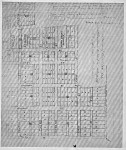Marion’s early efforts to attract diversified industry to supplement the coal mines are recalled by Miss Maude Owen, 510 S. Madison Street, who was secretary to the manager of the Marion Development Company not long after the turn of the century.
The Marion Development Co. was formed in 1913 by progressive Marion Business and professional men, and was the community’s Chamber of Commerce of that day. It continued until July, 1916 when World War I which had enveloped Europe was threatening to involve the United States, and preparedness in this country was taking first place in demands upon the public’s thinking and investment capital.
J.E. Myers, an industrial promoter from Chicago who had been located in Benton for several years, was employed as manager of the Marion Development Co. Miss Owen was employed as his secretary in September, 1913 and worked for him until the approach of the war put an end to the company’s efforts, and he left Marion.
Miss Owen recalls that much of the enthusiasm for the development program of that day was engendered by the assertion by Myers and other leaders of the movement that the supply of coal in the area would soon be exhausted and other industry was needed to replace mining.
Financed by $5,000 invested by “patriotic and public spirited citizens” in capital stock of the Marion Development Co., the organization obtained results. By 1916 a glove factory and a foundry were operating, a three story building to house a piano factory was near completion and plans for a factory to be occupied by a firm building automobiles and farm machinery were under way.
There were about 250 stockholders in the development company who made pledges of funds to support the program. Among the active leaders in the program which sought development of an area that is now largely occupied by homes or commercial enterprise, and is still the object of further development plans, Miss Owen recalls C. W. Hay and Arthur Aikman.
Miss Owen has preserved a copy of a pamphlet issued by the development company which was titled, “Marion, the Opportunity City, and its proposed industries.”
The pamphlet outlined plans for the purchase of land for home sites and industrial installations calling for a local outlay of $125,000. The sale of home sites was an important feature of the program. Beginning in 1912, farm land owned by Henry Brown on the south side of old Route 13 (West Main) in the area that now includes First, Second, Third and Fourth Streets, was purchased and platted into lots. Miss Owen recalls that the lot sale by the development company was launched at a picnic held in the Elijah Blankenship woods located in what is now a part of the Veteran’s Hospital grounds. She remembers that about 500 persons attended the picnic.
Under the lot sale plan, persons who underwrote the fund required for industrial development of the community were to be assigned lots as security for the funds they guaranteed. The remaining lots were to be sold and the proceeds turned into the general development fund. The lots were expected to grow in value when workers began seeking homes near the factories by which they were employed.
The Blankenship land on the north side of Route 13 and west of the Motel Marion was leased and platted into lots known as Marion Heights. A bungalow was built on the first street west of the motel and it was used as an office for the company and headquarters for the sale of lots.
Twenty acres of land was purchased immediately north of Marion Heights along the Illinois Central railroad where a foundry was established by the J. W. Harrison Co. of Attica, Indiana and operated for about three years under the management of George Morgan who came here from St. Louis.
The Herald Piano Company building was almost complete when the development plans collapsed. Miss Owen remembers that Dr. Herald for whom the company was named visited Marion during construction of the building and arranged for the delivery of a player piano to the development company’s office where it was left for inspection and use of interested stockholders and citizens.
The glove factory was operated by the Inskeet Manufacturing Company of Washington Courthouse, Ohio which occupied a three story brick building built by the local developers at the West Union Street crossing on the C & EI Railroad. Beginning in 1914 or 1915, the factory was in operation until expiration of it three year contract with the community. The building was later occupied for many years by the Goddard Wholesale Company and later by Cox Hardware and Furniture and the Marion Pepsi Cola Company as a warehouse.
At the time the development program was abandoned the local organization was negotiating with the Buckeye Manufacturing Company of Anderson, Indiana, manufacturers of automobiles, gasoline engines and farm tractors. The company was seeking a location for a plant to build farm machinery.
( Glimpses at Life article by Homer Butler, written in the 1960’s)
Sam’s Notes: The Marion Heights development for the most part failed and didn’t have time to materialize due to the war. I have attached a plat map of the proposed real estate development that included First, Second, Third, and Fourth Streets. Had the project gone through the lots and streets would be laid out differently than they exist today. This area of Marion was completely replatted again in 1941 while Harry Crisp was Mayor except this time the subdivision is called Elmwood Place.

